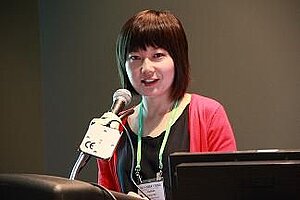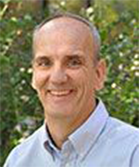Sorption, Degradation, and Mobility of 17ß-Estradiol-17-Sulfate in Agricultural Soils

Xuelian Bai is a Ph.D. candidate in Soil Science at North Dakota State University. She has a Master of Science degree in Soil Science and a Bachelor of Science degree in Agricultural Resources and Environment both from China Agricultural University, China. Her current research program is to investigate the fate and transport of manure-borne hormone conjugates in agricultural soils.
Email: Xuelian.Bai@ndsu.edu
Phone: 701-541-0117
Fellow: Xuelian Bai
Advisor: Dr. Francis Casey, Ph.D., Professor, Department of Soil Science, North Dakota State University
Degree Progress: Ph.D. candidate, passed preliminary exams on May 23rd, 2011
Sorption, Degradation, and Mobility of 17ß-Estradiol-17-Sulfate in Agricultural Soils
Naturally occurring 17ß-estradiol (E2) is known as an endocrine disruptor of high potency in the environment. Both laboratory- and field-based studies have been carried out to investigate the environmental fate of E2. There are discrepancies between field and laboratory studies, where E2 is found to rapidly sorb and degrade under laboratory conditions; however, it is mobile and persistent in the environment. Multiple field studies have detected E2 at levels that can potentially impact water quality. One of the possible causes of the discrepancies is that deconjugation of E2 conjugates may release free E2 and increase the apparent transport of E2 in the environment. Humans and animals release steroidal estrogens primarily as sulfate and/or glucuronide conjugates, which increases estrogen solubilities and facilitates their urinary excretion. Estrogen sulfates are present predominantly in the maternal circulation of pregnant animals and appear to be the major estrogenic compound in cattle urine during pregnancy. Deconjugation of E2 sulfate has been observed in wastewater from human sewage treatment plants and in pasture soils. Estrone-3-sulfate has the ability to induce apoptosis in the testicular cells of Japanese quails, which results in reduction of testicular weight and testosterone concentrations via deconjugation. The environmental fate and transport of E2 sulfate conjugates is of increasing concern because these conjugates have the potential to release free E2 and they are more mobile and persistent in the environment.
Project Objectives:
Information is still lacking on fate and transport of estrogen conjugates in agricultural soils. One study reported that estrogen conjugates accounted for at least one-third of the total estrogen load in different types of animal feeding operation (AFO) lagoons. In this study, we hypothesized that deconjugation of E2-17-sulfate (E2-17S) could be a potential precursor for free E2 in agricultural soils. The study conjugate E2-17S was chosen because it was detected at relatively high concentration (80 ng L-1) in swine sow lagoons. The objective of this study was to determine sorption, degradation, and mobility of E2-17S in agricultural soils using soil-water batch studies and column studies.
Progress:
The results of the batch study give evidence that E2-17S is relatively stable and persistent in the aqueous phase compared to its free form, E2. The persistence and solubility of E2-17S indicates that it has a greater potential, compared to E2, to move to surface and subsurface water by transport in precipitation, irrigation, and runoff waters. Additionally, E2-17S was found to de-conjugate to form the potent free E2. The deconjugation reaction may occur only on the solid phase instead of the aqueous phase, thus the release of free E2 in water may involve a further desorption process. This study implies that E2-17S, a manure-borne water soluble estrogen conjugate, can migrate in water and release free E2 as a potential source of E2 contamination in water systems. The batch studies have been completed and the ongoing work is using the experimental data to develop conceptual models. The models are expressed as differential equations that will be solved using a finite difference method, CVODE. The models are applied to describe the kinetics of degradation/transformation and sorption of E2-17S and its metabolites in the soil-water system. Furthermore, in order to investigate the mobility and transport of E2-17S in soil profiles, a series of column transport studies will be carried out under laboratory condition.
Significance:
Compared to free E2, E2-17S has a higher solubility and lower affinity to bind to soils. Thus, E2-17S should be relatively persistent in the aqueous phase during the batch study. It is also anticipated that E2-17S has the potential to transform to the more potent free E2, so E2 formation is likely to be observed. When E2 is formed, a further transformation from E2 to E1 may also take place. The benefit of this designed study will be to identify whether this sulfate conjugate can be a source of free E2 in the environment. If it can, we will better understand the unexpected high mobility and persistence of free estrogens observed in other field studies. So far, there is no information available on deconjugation of E2-17S in agricultural soils. This study may give us more evidence that the potential risk of estrogens and their conjugates in the environment has been underestimated.
Conference:
Bai, X., F.X.M. Casey, H. Hakk, T.M. DeSutter, P.G. Oduor, and E. Khan. 2010. Sorption and degradation of 17ß-estradiol-17-sulfate in agricultural soils. ASA, CSA, SSSA annual meeting abstract , Long Beach, CA.
Bai, X., F.X.M. Casey, H. Hakk, T.M. DeSutter, P.G. Oduor, and E. Khan. 2011. Sorption and degradation of 17ß-estradiol-17-sulfate in agricultural soils. MSSA annual meeting abstract, Winnipeg, Manitoba, Canada.
Bai, X., F.X.M. Casey, S.L. Shrestha, H. Hakk, T.M. DeSutter, P.G. Oduor, and E. Khan. 2011. Modeling sorption and degradation of 17ß-estradiol-17-sulfate in agricultural soils. ASA, CSA, and SSSA annual meeting abstract, San Antonio, TX.
Bai, X., F.X.M. Casey, S.L. Shrestha, H. Hakk, T.M. DeSutter, P.G. Oduor, and E. Khan. 2011. Modeling sorption and degradation of 17ß-estradiol-17-sulfate in agricultural soils. AGU annual meeting. San Francisco, CA. Shrestha, S.L., X. Bai, D.J. Smith, H. Hakk, F.X.M. Casey, G.L. Larsen, and G. Padmanabhan. 2011. Synthesis and characterization of radiolabeled 17β-estradiol conjugates. Journal of Labelled Compounds and Radiopharmaceuticals. 54:267-271.
DeSutter, T., E. Vial, I. Rijal, M. Murdoff, A. Guy, X. Pang, S. Koltes, R. Luciano, X. Bai, K. Zitnick, S. Wang, F. Ppdrebarac, F. Casey, and D. Hopkins. 2010. Integrating field-based research into the classroom: an environmental sampling exercise. Journal of Natural Resources and Life Sciences Education. 39:132-136.

Frank Casey
Director of the School of Natural Resources
Office: Hultz Hall 202
Telephone: 701-231-8577
Email: francis.casey@ndsu.edu


